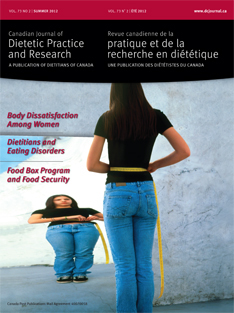Abstract
Purpose: Associations were examined between body image and body mass index (BMI) in comparison with body composition in healthy weight, overweight, and obese young adults.
Methods: Weight and height were determined, and the percentage of fat mass (%FM) and percentage of fat-free mass (%FFM) were measured by dual energy X-ray absorptiometry in 75 male and 87 female young adults (21.1 ± 1.9 years; 25.2 ± 4.4 kg/m2 [mean ± standard deviation]). Body image was measured using the three subscales Weight Esteem, Appearance Esteem, and External Attribution of the Body-Esteem Scale for Adolescents and Adults (BESAA).
Results: Body mass index and %FM were highly correlated (r for males = 0.74, r for females = 0.82; both p<0.001), and were inversely associated with body image, particularly Weight Esteem. After adjustment for physical activity, BMI and %FM (and %FFM, although in the opposite direction) were associated with each BESAA subscale: %FM, %FFM, and BMI explained 12% to14% of the variance in Appearance Esteem for both sexes, 33% to 41% in Weight Esteem in women and 16% to 18% in men, and 8% to 10% in External Attribution in women (all p<0.05) and <5% for men (NS).
Conclusions: Clinicians should be aware that as their clients’ BMI and %FM increase, body image decreases, particularly in women.
Résumé
Objectif: Les associations entre l'image corporelle et l'indice de masse corporelle (IMC) en comparaison avec la composition corporelle chez des adultes en excès de poids, obèses et ayant un poids santé ont été étudiées.
Méthodes: Le poids et la taille ont été déterminés, et le pourcentage de masse adipeuse (%MA) et de masse maigre (%MM) a été mesuré par absorptiométrie à rayons X en double énergie chez 75 jeunes hommes et 87 jeunes femmes (21,1 ± 1,9 ans; 25,2 ± 4,4 kg/m2 [moyenne ± écart-type]). L'image corporelle a été évaluée à l'aide des trois sous-échelles de l’échelle d'estime relative au corps des adolescents et des adultes (EECAA), à savoir l'estime relative au poids, l'estime relative à l'apparence et l'attribution externe.
Résultats: L'indice de masse corporelle et le %MA étaient hautement corrélés (r pour les hommes = 0,74, r pour les femmes = 0,82; p pour les deux < 0,001), et étaient inversement associés à l'image corporelle, particulièrement à l'estime relative au poids. Après ajustement pour l'activité physique, l'IMC et le %MA (ainsi que le %MM, bien que dans l'autre direction) ont été associés à chaque sous-échelle de l'EECAA : le %MA, le %MM et l'IMC expliquaient 12 % à 14 % de la variance de l'estime relative à l'apparence pour les deux sexes; 33 % à 41 % de celle relative au poids chez les femmes et 16 % à 18 % de celle chez les hommes; et 8 % à 10 % de la variance de l'attribution externe chez les femmes (p tous < 0,05) et moins de 5 % chez les hommes (non significatif).
Conclusions: Les cliniciens devraient savoir que plus l'IMC et le %MA de leurs clients augmentent, plus l'image corporelle diminue, particulièrement chez les femmes.



